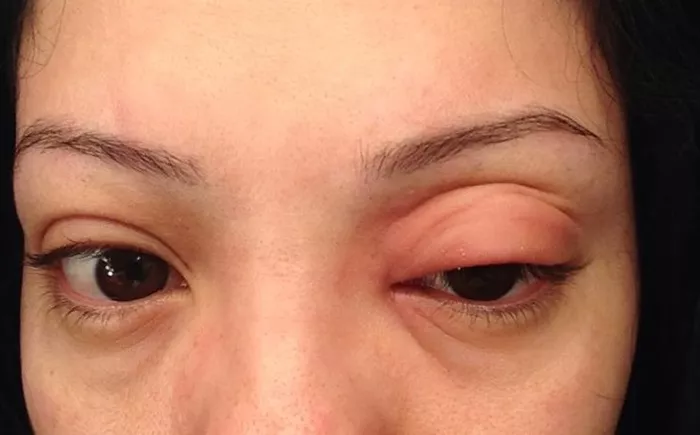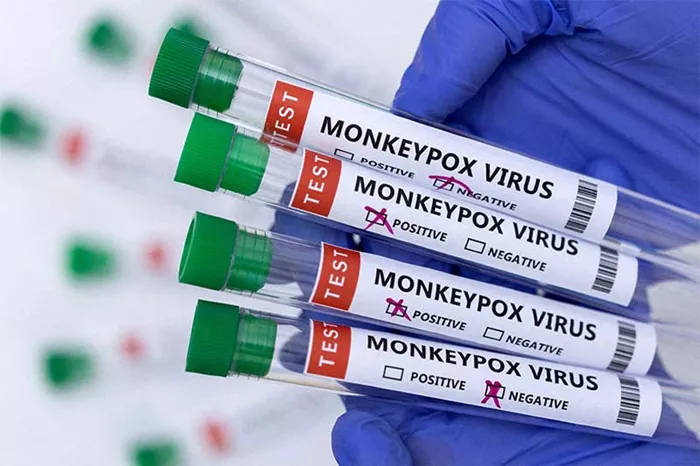Eye allergic reactions, or allergic conjunctivitis, are common and can affect individuals of all ages. These reactions occur when the eyes come into contact with allergens—substances that the immune system mistakenly identifies as harmful. Understanding what causes eye allergic reactions, how they manifest, and the ways to manage and prevent them is essential for maintaining good eye health.
Eye Allergies
Eye allergies are a form of conjunctivitis, specifically known as allergic conjunctivitis. Conjunctivitis refers to the inflammation of the conjunctiva, the clear, thin membrane covering the white part of the eye and the inside of the eyelids. When an allergen triggers an immune response in this area, it leads to the symptoms commonly associated with eye allergies.
Types of Allergic Conjunctivitis
Allergic conjunctivitis can be broadly categorized into two types:
1. Seasonal Allergic Conjunctivitis (SAC): This type is the most common and occurs in response to seasonal allergens like pollen from trees, grasses, and weeds. SAC typically peaks during spring and fall when pollen counts are high.
2. Perennial Allergic Conjunctivitis (PAC): Unlike SAC, PAC occurs year-round and is triggered by indoor allergens such as dust mites, pet dander, and mold. Individuals with PAC may experience symptoms throughout the year, although they may worsen during certain seasons.
Common Causes of Eye Allergic Reactions
The primary cause of eye allergic reactions is exposure to allergens. These allergens can be airborne or present in substances that come into direct contact with the eyes. Here are the most common causes:
1. Pollen
Pollen from trees, grasses, and weeds is one of the most prevalent triggers of eye allergies, especially during the spring and fall seasons. When pollen grains come into contact with the eyes, they can cause an allergic response in sensitive individuals, leading to symptoms like redness, itching, and watering of the eyes.
2. Dust Mites
Dust mites are microscopic organisms that thrive in household dust. They are a common cause of perennial allergic conjunctivitis. Dust mites are often found in bedding, upholstered furniture, carpets, and curtains. When their waste particles become airborne and enter the eyes, they can trigger an allergic reaction.
3. Pet Dander
Pet dander consists of tiny, even microscopic, flecks of skin shed by cats, dogs, rodents, birds, and other animals with fur or feathers. These small particles can easily become airborne and settle on surfaces. Individuals who are allergic to pet dander may experience eye allergies when exposed to these allergens, especially if they come into direct contact with pets.
4. Mold Spores
Mold thrives in damp and humid environments, both indoors and outdoors. Mold spores are tiny, lightweight particles that can easily become airborne and enter the eyes. Exposure to mold spores can cause allergic conjunctivitis, particularly in individuals who are sensitive to molds.
5. Contact Lens Solutions
Some individuals may be allergic to preservatives or other chemicals in contact lens solutions. These substances can cause irritation and allergic reactions in the eyes. Switching to preservative-free solutions or using daily disposable lenses can help alleviate these symptoms.
6. Cosmetics and Eye Drops
Certain cosmetics, particularly eye makeup, can contain ingredients that trigger allergic reactions in the eyes. Similarly, some eye drops contain preservatives or active ingredients that may cause allergies in sensitive individuals.
7. Environmental Pollutants
Pollutants such as smoke, fumes, and chemicals in the air can irritate the eyes and exacerbate allergic reactions. Individuals living in areas with high pollution levels may be more prone to developing eye allergies.
See Also: What Is the Best Allergy Medication for Itchy Eyes?
Mechanism of Eye Allergic Reactions
Eye allergic reactions occur when the immune system mistakenly identifies a harmless substance as a threat. The following steps outline the mechanism of an allergic reaction in the eyes:
1. Allergen Exposure
The process begins when an allergen, such as pollen or pet dander, comes into contact with the conjunctiva. This can happen when allergens are airborne and land on the surface of the eyes or when the eyes come into direct contact with contaminated hands or objects.
2. Immune System Response
Upon exposure to the allergen, the immune system recognizes it as a foreign invader. In response, the body releases antibodies known as Immunoglobulin E (IgE). These antibodies bind to mast cells, which are a type of white blood cell present in the conjunctiva and other tissues.
3. Release of Histamines
When IgE binds to the mast cells, it triggers the release of histamines and other inflammatory chemicals. Histamines are responsible for most of the symptoms associated with allergic reactions, including redness, itching, and swelling of the eyes.
4. Inflammatory Response
The release of histamines and other chemicals leads to inflammation in the conjunctiva, causing the blood vessels to dilate and the tissues to become swollen. This inflammation results in the characteristic symptoms of allergic conjunctivitis.
Symptoms of Eye Allergies
Eye allergies can cause a range of symptoms, varying in severity from mild discomfort to severe irritation. Common symptoms include:
1. Itching
Itching is one of the most common symptoms of eye allergies. The urge to rub the eyes can be intense, but rubbing can worsen the symptoms by spreading allergens and causing further irritation.
2. Redness
The eyes may appear red or bloodshot due to the dilation of blood vessels in the conjunctiva. This redness is often accompanied by a burning sensation.
3. Tearing
In response to irritation, the eyes may produce excess tears. This tearing is the body’s way of trying to flush out the allergens.
4. Swelling
The eyelids and conjunctiva may become swollen due to inflammation. In severe cases, the swelling can cause discomfort and affect vision.
5. Sensitivity to Light
Eye allergies can make the eyes more sensitive to light, a condition known as photophobia. This sensitivity can cause discomfort in bright light and may lead to squinting.
6. Grittiness
Some individuals may experience a gritty or sandy sensation in their eyes, as if there is a foreign object in the eye. This sensation can be particularly bothersome and may lead to further irritation.
7. Blurred Vision
In severe cases, the swelling and tearing associated with eye allergies can cause temporary blurred vision. This blurriness usually resolves once the allergic reaction subsides.
Diagnosing Eye Allergies
Diagnosing eye allergies typically involves a combination of medical history, physical examination, and sometimes allergy testing. Here’s how healthcare providers diagnose allergic conjunctivitis:
1. Medical History
The healthcare provider will begin by asking about the patient’s symptoms, including when they occur, how long they last, and any potential triggers. They will also inquire about the patient’s medical history, including any known allergies, asthma, or eczema, as these conditions are often associated with eye allergies.
2. Physical Examination
A thorough examination of the eyes will be conducted to check for signs of allergic conjunctivitis, such as redness, swelling, and discharge. The healthcare provider may also examine the eyelids and the surrounding skin for signs of allergic reactions.
3. Allergy Testing
In some cases, allergy testing may be recommended to identify specific allergens that trigger the eye allergic reaction. This can involve skin prick tests, blood tests, or patch tests. Identifying the allergens can help in developing a targeted treatment plan.
Treatment Options for Eye Allergies
Treating eye allergies involves both alleviating symptoms and addressing the underlying cause. The following are common treatment options:
1. Avoidance of Allergens
The most effective way to manage eye allergies is to avoid exposure to the allergens that trigger the reaction. This can involve:
- Staying indoors during high pollen counts
- Using air purifiers to reduce indoor allergens
- Keeping windows closed during allergy season
- Regularly cleaning bedding, carpets, and upholstery to minimize dust mites
- Limiting exposure to pets if allergic to pet dander
2. Over-the-Counter Medications
Several over-the-counter (OTC) medications can help alleviate the symptoms of eye allergies. These include:
Antihistamine Eye Drops: These drops work by blocking the action of histamines, thereby reducing itching, redness, and swelling.
Decongestant Eye Drops: These drops help reduce redness by constricting the blood vessels in the eyes. However, they should not be used for extended periods as they can cause rebound redness.
Artificial Tears: These lubricating eye drops help flush out allergens from the eyes and provide relief from dryness and irritation.
3. Prescription Medications
For more severe or persistent eye allergies, prescription medications may be necessary. These include:
Corticosteroid Eye Drops: These drops reduce inflammation in the eyes but are typically used for short periods due to potential side effects.
Mast Cell Stabilizers: These medications prevent the release of histamines and other inflammatory chemicals from mast cells. They are often used as a preventive measure before exposure to allergens.
Oral Antihistamines: In cases where eye symptoms are accompanied by other allergic reactions, oral antihistamines may be prescribed.
4. Immunotherapy
Immunotherapy, also known as allergy shots, involves gradually exposing the patient to increasing amounts of the allergen to desensitize the immune system. This treatment is usually recommended for individuals with severe allergies that do not respond to other treatments.
Preventing Eye Allergic Reactions
Preventing eye allergic reactions requires a combination of strategies aimed at minimizing exposure to allergens and maintaining good eye hygiene. Here are some effective prevention tips:
1. Monitor Pollen Counts
During allergy season, check local pollen counts and try to stay indoors when levels are high. Wearing sunglasses outdoors can also help reduce the amount of pollen that comes into contact with your eyes.
2. Keep Indoor Air Clean
Use air purifiers with HEPA filters to reduce the concentration of airborne allergens in your home. Regularly clean and vacuum your living spaces to minimize dust, pet dander, and mold.
3. Maintain Good Eye Hygiene
Avoid touching or rubbing your eyes, especially with unwashed hands. Wash your hands frequently, and if you wear contact lenses, ensure they are cleaned and stored properly.
4. Choose Hypoallergenic Products
Select hypoallergenic cosmetics, eye drops, and contact lens solutions to reduce the risk of allergic reactions. Avoid products with known irritants or preservatives that can trigger eye allergies.
5. Manage Pet Allergies
If you are allergic to pet dander, consider keeping pets out of the bedroom and off furniture. Regularly bathe and groom pets to reduce the amount of dander they shed.
When to See a Doctor
While most eye allergic reactions can be managed with over-the-counter treatments and preventive measures, there are times when medical attention is necessary. You should see a doctor if:
- Your symptoms are severe or do not improve with OTC treatments.
- You experience pain, changes in vision, or excessive discharge from your eyes.
- Your eye symptoms are accompanied by other allergic reactions, such as difficulty breathing or swelling of the face and throat.
- You develop symptoms of an eye infection, such as a yellow or green discharge, increased sensitivity to light, or a fever.
Conclusion
Eye allergic reactions are a common and often frustrating condition, but with the right knowledge and strategies, they can be effectively managed and prevented. By understanding the causes, recognizing the symptoms, and taking appropriate steps to avoid allergens, you can protect your eyes and maintain clear, comfortable vision. If you experience persistent or severe symptoms, consult a healthcare provider for a proper diagnosis and tailored treatment plan.
[inline_related_posts title=”You Might Be Interested In” title_align=”left” style=”list” number=”6″ align=”none” ids=”8810,8287,5644″ by=”categories” orderby=”rand” order=”DESC” hide_thumb=”no” thumb_right=”no” views=”no” date=”yes” grid_columns=”2″ post_type=”” tax=””]



































